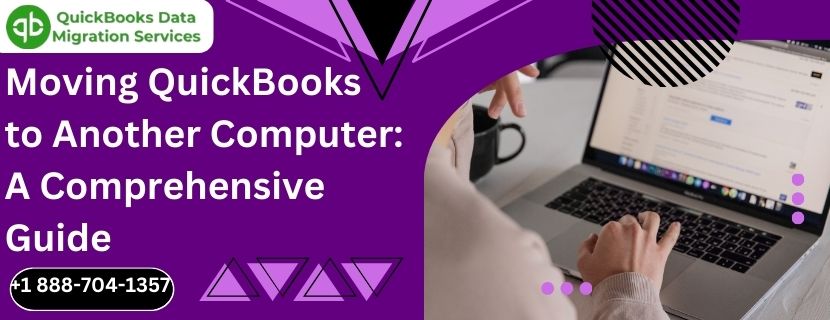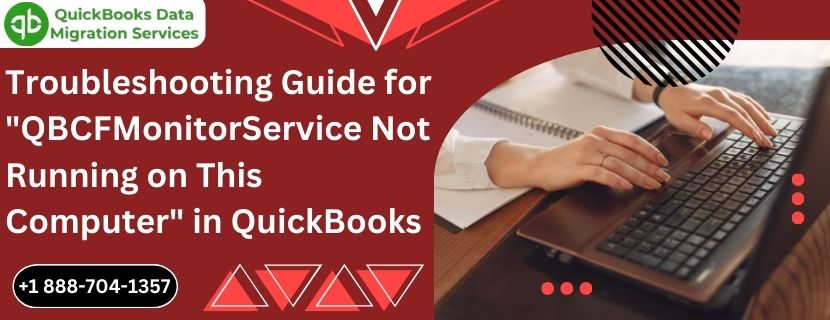QuickBooks is a vital tool for many businesses, offering powerful accounting and financial management capabilities. However, there may come a time when you need to move QuickBooks to another computer. Whether you’re upgrading hardware, transitioning to a new work environment, or simply need to transfer QuickBooks to a different device, the process can seem daunting. In this comprehensive guide, we’ll walk you through the steps to move QuickBooks to another computer smoothly and efficiently, ensuring that your financial data remains intact and accessible.
Read More :- QuickBooks Restore failed
Why Move QuickBooks to Another Computer?
There are several reasons why you might need to move QuickBooks to a new computer:
- Hardware Upgrade: Upgrading to a new computer with better performance and storage capabilities.
- Work Environment Change: Transitioning to a different office location or setting up QuickBooks on multiple workstations.
- Replacing an Old Computer: Moving QuickBooks from an old or failing computer to a new one.
No matter the reason, the process of moving QuickBooks involves transferring both the software and your company file, ensuring that everything functions seamlessly on the new computer.
Preparing for the Move
Before you begin the process of moving QuickBooks to another windows 11 computer, there are several preparatory steps you should take:
1. Backup Your Data
Before making any changes, it’s crucial to create a backup of your QuickBooks data. This ensures that you have a copy of your financial information in case anything goes wrong during the transfer process.
2. Verify System Requirements
Ensure that the new computer meets the system requirements for running QuickBooks. Check the QuickBooks website for the latest specifications, including operating system, processor, RAM, and disk space requirements.
3. Gather Installation Files and License Information
Make sure you have access to the QuickBooks installation files and your license information. You’ll need this information to install QuickBooks on the new computer.
4. Notify Users
If you’re using QuickBooks in a multi-user environment, inform all users about the planned move. Coordinate with them to ensure a smooth transition and minimize disruptions to workflow.
Steps to Move QuickBooks to Another Computer
Once you’ve completed the preparatory steps, you can proceed with moving QuickBooks to the new computer. Follow these steps carefully to ensure a successful transfer:
Step 1: Install QuickBooks on the New Computer
Begin by installing QuickBooks on the new computer. You can use either the installation CD or download the software from the QuickBooks website.
- Insert the QuickBooks installation CD or download the installation file from the QuickBooks website.
- Run the installation file and follow the on-screen instructions to install QuickBooks on the new computer.
- Enter your license information when prompted.
Step 2: Transfer Your Company File
Read More :- QuickBooks abort error
Once QuickBooks is installed on the new computer, you’ll need to transfer your company file from the old computer. Here’s how to do it:
- Backup Your Company File: Open QuickBooks on the old computer and create a backup of your company file.
- Transfer the Backup File: Copy the backup file to a portable storage device such as a USB flash drive or external hard drive.
- Restore the Backup File: Connect the storage device to the new computer and transfer the backup file to the desktop.
- Open QuickBooks: Open QuickBooks on the new computer and go to the “File” menu.
- Select Restore Company: Choose “Restore a backup copy” and follow the prompts to restore your company file from the backup.
Step 3: Activate QuickBooks on the New Computer
Once your company file is transferred, you’ll need to activate QuickBooks on the new computer. Here’s how:
- Open QuickBooks on the new computer.
- Go to the “Help” menu and select “Activate QuickBooks.”
- Follow the on-screen instructions to enter your license information and activate QuickBooks on the new computer.
Step 4: Verify Data and Settings
After activating QuickBooks on the new computer, it’s essential to verify that your data and settings are correct. Open your company file and review key information such as customer records, vendor details, and financial transactions to ensure everything transferred successfully.
Step 5: Update QuickBooks
Finally, make sure that QuickBooks is up-to-date on the new computer. Check for any available updates and install them to ensure that you have the latest features, security patches, and bug fixes.
Troubleshooting Tips
If you encounter any issues during the transfer process, here are some troubleshooting tips to help resolve them:
- Error Messages: If you receive any error messages during the transfer process, note down the message and search for solutions on the QuickBooks support website or community forums.
- Data Verification: Use the Verify Data utility in QuickBooks to check for any data integrity issues. If problems are detected, you can attempt to resolve them using the Rebuild Data utility.
- Contact Support: If you’re unable to resolve the issue on your own, don’t hesitate to contact QuickBooks support for assistance. They can provide guidance and troubleshooting steps to help you resolve the problem.
Best Practices for Moving QuickBooks
To ensure a smooth transition when moving QuickBooks to another computer, consider the following best practices:
- Plan Ahead: Schedule the move during a time when it will cause the least disruption to your business operations. Notify all users in advance and plan for some downtime during the transition.
- Test the Setup: Before going live with the new setup, test QuickBooks on the new computer to ensure that everything is working correctly. Open the company file, run key reports, and perform typical tasks to verify the setup.
- Keep Backups: Maintain multiple backups of your company file throughout the transition process. This ensures that you can restore your data if something goes wrong.
- Update All Software: Ensure that both QuickBooks and your operating system are up-to-date. This reduces the risk of compatibility issues and provides access to the latest features and security improvements.
- Seek Professional Help if Needed: If you’re unsure about any part of the process, consider seeking help from a QuickBooks ProAdvisor or IT professional. They can provide expert guidance and support to ensure a successful transition.
Conclusion
Moving QuickBooks to another computer is a significant task that requires careful planning and execution. By following the steps outlined in this guide and adhering to best practices, you can ensure a smooth and successful transition. Remember to back up your data, verify system requirements, and test the setup before going live with the new computer. With proper preparation and attention to detail, you can minimize disruptions and continue managing your business finances effectively on your new computer.
Read More :- this company file needs to be updated




